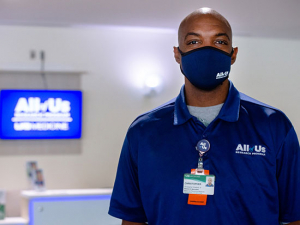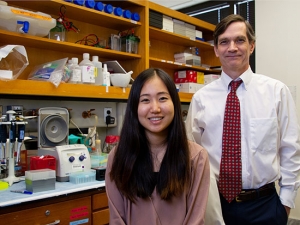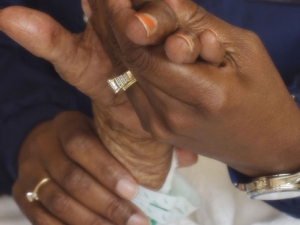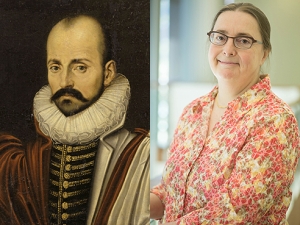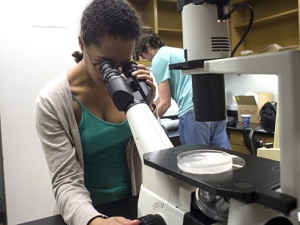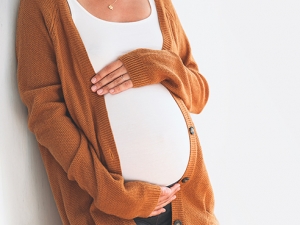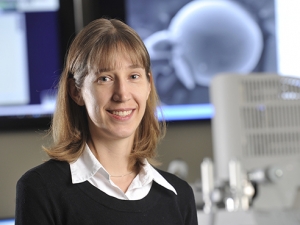 It can be hard to imagine relative unknowns in the world of medicine: scientists and clinicians have discovered anesthetics and birth controls, vaccines and DNA, penicillin and X-ray technology.
It can be hard to imagine relative unknowns in the world of medicine: scientists and clinicians have discovered anesthetics and birth controls, vaccines and DNA, penicillin and X-ray technology.
Yet even in the 21st century, as UAB leads the nation in robotic surgeries and its researchers develop new drug combination therapies to combat cancer, there are medical questions waiting for answers — many of which affect small, niche populations. One of those mysteries is how often women born with spina bifida, a congenital disorder involving incomplete closing of the backbone and membranes around the spinal cord, are able to reproduce, and how often it happens.
The reason behind that mystery? Until relatively recently, few people with conditions such as spina bifida survived to adulthood.
Discovering the questions
Children’s of Alabama is home to the largest pediatric spina-bifida multidisciplinary clinic in the state with more than 500 patients, and in 2012 UAB opened its own adult-transition clinic. Nurse Morgan Dew and other clinicians began to take note of a trend — many women born with spina bifida were leaving pediatric care not realizing they could become pregnant.
 Morgan Dew“It sparked an interest for us about how many of them actually are getting pregnant, how that is happening and whether they knew they were able to,” Dew said.
Morgan Dew“It sparked an interest for us about how many of them actually are getting pregnant, how that is happening and whether they knew they were able to,” Dew said.
To get a better understanding, Dew, used i2b2, a self-service application that enables UAB researchers to access de-identified patient data, to search UAB’s system for people with spina bifida who fit the study criteria. Initially, the researchers examined handpicked patient charts to see if they were pregnant or had been previously. They were able to find and contact six women. With i2b2, Dew found five more — nearly doubling her sample size.
As new patients are discovered, they are asked a series of questions about their age, their knowledge of chances for reproduction, their child’s birth and a range of bodily changes that can happen during pregnancy in women born with spina bifida. The research team intends to publish its findings, Dew said, because there is little data about reproductive awareness or results in women with spina bifida.
They also plan to implement an education program at Children’s to help pediatric patients transition into adult spina-bifida care with better understanding of their reproductive options.
“Twenty years ago, patients with spina bifida weren’t living as long as they are now. Many of our patients now have no idea they can reproduce,” Dew said. “We want to take this new knowledge back to the pediatrics world and implement an education plan for their lifespans.”
During the i2b2 and surveying processes, Dew and other researchers identified related research topics — including awareness of their sexuality, sexual functions and ability to reproduce by people with spina bifida of either gender.
|
“Twenty years ago, patients with spina bifida weren’t living as long as they are now. Many of our patients now have no idea they can reproduce. We want to take this new knowledge back to the pediatrics world and implement an education plan about their lifespans and reproductive systems.” |
Expanding research through i2b2
Dew isn’t the only researcher who has used i2b2 to further her research substantially. Abdullah Alanazi, a Ph.D. student in rehabilitation science who used it to find data comparing smokers’ uses of electronic cigarettes and tobacco, was the winner of the inaugural i2b2 Abstract Awards Contest held earlier this year. Wolfgang Muhlhofer, M.D., assistant professor of neurology, used i2b2-generated data to identify new information about therapeutic comas and their application in patients with refractory status epilepticus. Dew, Alanazi and Muhlhofer presented their research in the Center for Clinical and Translational Science’s April forum; view the 45-minute presentation on YouTube.
Any researcher at UAB can access i2b2; CCTS offers online i2b2 training videos and step-by-step instructions for accessing the system to obtain summary and detailed data sets.
“I’d encourage researchers to use i2b2 to help find patients,” Dew said, adding that the ability to search for multiple factors in one go is a huge time-saver. “We found the information we needed in 15 minutes when before it would have taken us a week.”






